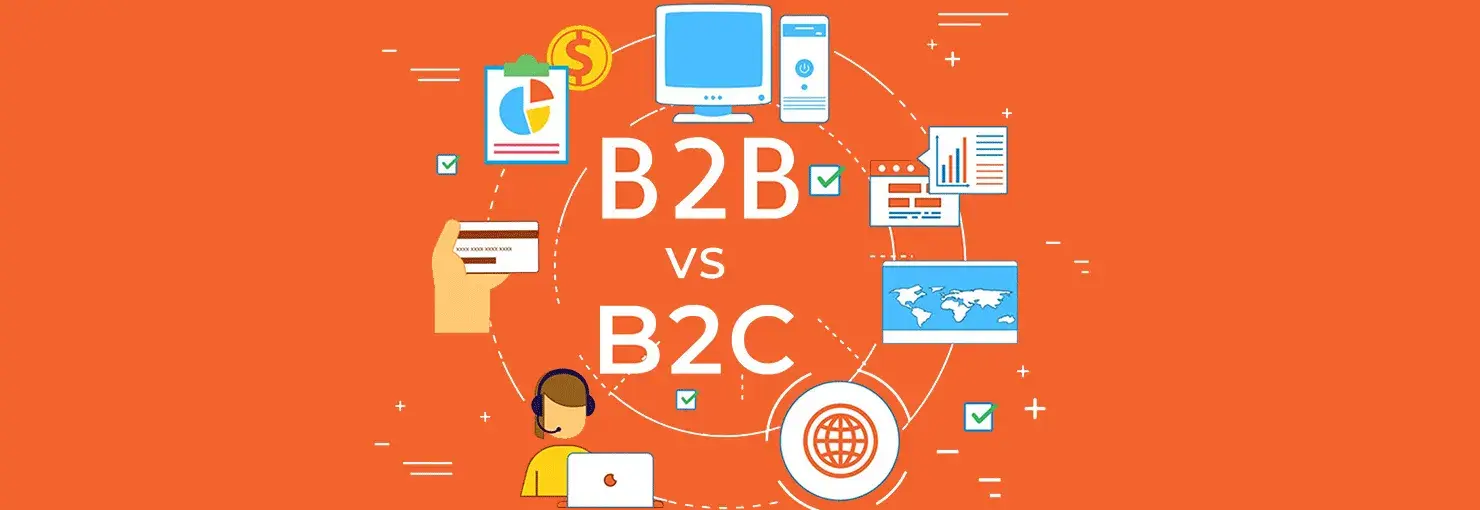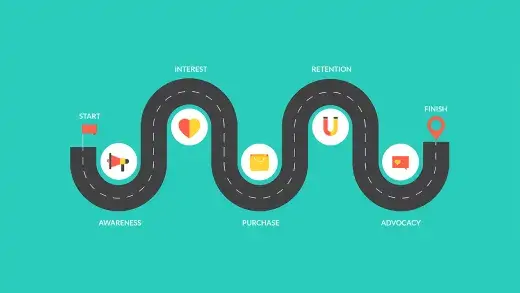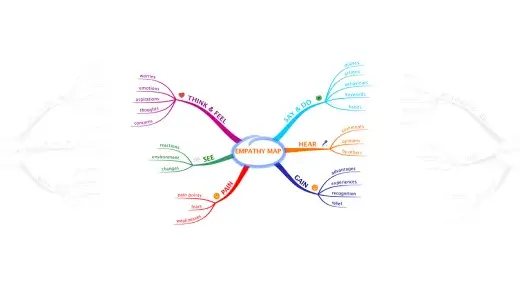B2B vs. B2C Website

B2B and B2C are two popular business models in e-commerce, they have some similarities: they need to establish a clear information architecture, include compelling content, offer details about products and services that users care about, and have simple, understandable interaction design.
However, there are very different points from the purpose to the audiences, which leads to how the setting up and design of the website are different, meeting the different needs of audiences.
What is B2B?
B2B stands for Business-To-Business, an e-commerce business model in which sell products and services directly to other businesses.
The B2B often involves transactions between a manufacturer and a wholesaler or a wholesaler and a retailer. Generally, there is a supply chain in the B2B format, and the products/services have multiple touchpoints at each business along the way to the consumer. As a result, the buying cycle of the business-to-business model is often long and taking anywhere from days to years.
What is B2C?
B2C, or Business To Consumer, is the type of commerce transaction in which businesses sell products or services directly to consumers.
B2C sales is fast and consists of a few targeted touches and a continuous presence. It operates through the internet mostly and customers are individuals who purchase goods for their own consumption purposes, not generate any further transactions. This is a popular business model in Vietnam.
The differences between B2B and B2C Website
Target audience
B2B Web
Target customers of B2B model are businesses that buy with a great quantity for business purposes, so orders' value are often great. From that, it is important to have a specific contract among parties rather than a transaction on ecommerce platform.
B2C Web
The target customers of B2C model are individual customers, who buy products to use for their own purpose, so the value of orders is usually small.
Because of personal users, it is not necessary to have further negotiation between two parties. All conditions relating to purchase, price, policy, return of goods are updated in detail on the sales website. Customers only read these terms and decide whether to buy goods or not.
Decision making Process
Purpose
To create a website that attracts audiences, you have to understand the motive behind the purchase
B2B Web
There are three main purposes when businesses come to your website:
1. Solve problem
2. Make purchase
3. Learn or explore something new
Therefore, the main purpose of website is showing businesses the easy way to find what they want. The key purpose is building trust with businesses and maintain long-term relationships.
B2C Web
The target customers of B2C model are individual customers, who buy products to use for their own purpose, so the value of orders is usually small.
Because of personal users, it is not necessary to have further negotiation between two parties. All conditions relating to purchase, price, policy, return of goods are updated in detail on the sales website. Customers only read these terms and decide whether to buy goods or not.
Sale cycle
B2B Web
B2B purchases are the result of a long, complex decision-making process. First, customers will begin with a purchase researching for weeks, months, or even years before the decision is made.
The decision making process involve many corporate hierarchy and functional job roles. B2B customers will share options with multiple people on their team, for research, justification, and approval purposes.
B2C Web
B2C purchases take shorter time for making decision (than B2B) as customers often directly purchase the product on the spot. The B2C customers' decision making process based on their status-related, personal gratification, emotional attachment and price comparison,...and often have an influence on other individuals such as their friends or relatives.
The differences between B2B and B2C Website Design
Content of website
As the different target audiences with distinct needs,the content between B2B and B2C websites are very different. In order to write a good content, you need to clearly understand the features of them.
B2B Web
When writing content for B2B, you have to be careful that you are speaking to a mixed audience, it's different between chooser and buyer. You can work with different businesses in different industries so the content need to written generic enough and free of jargon that it could speak to any decision-maker.
Businesses usually looking for much information to completely trust the website before converting. Therefore, the content strategy should be organized with a clear hierarchy, multiple variations information with clear language, include valuable resources, and visible CTA to assure your users that your product or service is the right fit for their company.
Resources include:
- Value of the product, how it solves the problem: features or how it works, explainer video, product demo,...
- Trust resources: testimonials, partner, certification, case study...
- Education resources: tips or document for downloading, case study, blogs,...
B2C Web
Differently from B2B, writing content for B2C is easier, target audience is just a single customer. Because customers concerns about short-term individual benefits, the content is simple and show the easy way to buy product for customers. Really, it depends on what the solution is and how easy it is to explain and sell to a customer.
Customers are attracted by short and compelling headlines since the consumers are not looking for a ton of information. Product/service information must be upfront and clear.
The content should regularly updated to attract customers.
Layout of website
The design of a website reflect its general aesthetic and vibe, for example: B2B website should be clean, informative, and professional, while a B2C website should be fun, interactive, and attractive. There are differences between designing for B2B websites and B2C websites.
B2B Web
B2B website is often formal and conservatively designed by using these way:
- Minimal design
- Safe typography and imagery styles
- Bold swatches of contrasting color, the color choice usually not too outlandish.
- Simple and clear navigation
- Visible CTA to drive the visitors go through the websites. Help them easy to complete their purpose or complete our offers for them
Generally, B2B websites present a mostly buttoned-up image and they can show what kinds of businesses that target based on the design
B2B Web
B2C companies are marketing to end-users, they often rely on lots of product images and design. These are intended to entice the viewer into buying something by making the website appealing. B2C websites tend to have a lot more fun with design, as long as it aligns with the brand’s overall look:
- Large, eye-catching imagery with minimal text laid atop or around it.
- Typography, spacing, and layout can be creative so long as readable.
- Attractive color and movement play a huge role in navigating visitors to where they should go.
B2C customers often have more free-time so they likely to explore/ research many sites at the same time. If the website's content is interesting and the design is attractive, the visitor will stay a little longer on that website before clicking away, the customer engagement would be increased.
➔ To sum up, B2B website should be clean, informative, and professional, while a B2C website should be fun, interactive, and attractive in order to improve the website bounce rate and average time that visitors spent on their website.
Example
B2B Web
Asana
B2C Web
Tommy Hilfiger
References
https://www.nngroup.com/articles/b2b-vs-b2c/
https://usabilitygeek.com/designing-b2b-vs-b2c-websites/
https://premium.wpmudev.org/blog/differences-designing-b2b-and-b2c-websites/


